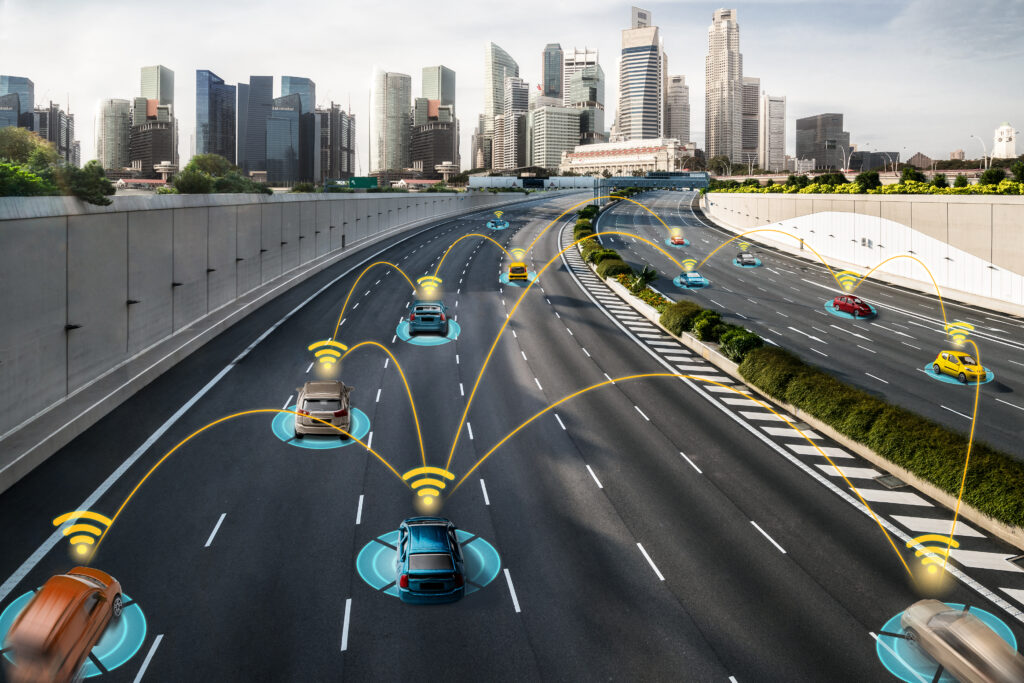Blog
"Casual" conversation with a CK:PAP expert
Will autonomous taxis revolutionize the transport industry? What challenges do their producers face? What are the limitations and barriers related to autonomous mobility? These and similar questions concern everyone who is interested in implementing innovations in the automotive and transport industry.
On September 30, 2023, Dr. Eng. Mikołaj Kruszewski, expert of the Connected and Autonomous Vehicles Competence Centre (CK:PAP), took part in a conversation on Polish Radio of Drivers (broadcast “Na luzie”). The main topics of the discussion were global trends in autonomous mobility and the prospects for implementing autonomous vehicles in Poland.
The solutions currently used make it possible to allow autonomous vehicles to operate in precisely defined areas, on road sections equipped with the necessary infrastructure. According to Dr. Eng. Mikołaj Kruszewski: “Autonomous rides that have already been approved are limited in terms of the space in which vehicles can move. The limitation of the travel zone is due to the fact that the areas where autonomous vehicles can move must be very well mapped. 3D spatial maps of specific areas are made so that vehicles can locate themselves in space not only using GPS signals, which are useful but very often not accurate enough, but using control points that are characteristic of these areas”.
For example, autonomous taxis operate in various cities in the United States. Two states particularly stand out in this respect – Arizona and California, which are leaders in this type of implementation, primarily due to political “favor” and an appropriate level of social acceptance. Dr. Kruszewski emphasized that “Autonomous taxis in Phoenix are an important implementation, an important milestone for the development of autonomous vehicles in the world. Fully autonomous vehicle traffic has been allowed over a large area. This is a breakthrough moment when vehicles can carry passengers without a safety driver (…) States such as Arizona and California are ideal for testing autonomous vehicles due to weather conditions. San Francisco has also already introduced robotaxi services, currently at night, but this is also an important step.”
However, allowing vehicles without a driver to travel on public roads raises doubts. Do the algorithms used guarantee correct vehicle reactions in all possible road situations? “It is very difficult to program an algorithm that will respond correctly to every possible situation (…). This is the biggest challenge: for the vehicle to be able to recognize such situations and react to them, even if it is only a reaction in the form of an emergency stop“, noted the CK”PAP expert.
Is security, including cybersecurity, ensured at the highest level? For example, Waymo, which provides autonomous transport in Phoenix, currently does not allow taxis to operate in unfavorable weather conditions (rain, fog) because it may interfere with the operation of sensors used in the vehicles. “It is not allowed for a car to be driven when it may have insufficient quality of receiving signals from the surroundings (…) when cameras, lidars, radars may be disturbed in any way. This is, of course, for safety reasons“, added Dr. Kruszewski.
The implementation of autonomous vehicles is a long-term venture, fraught with doubts and barriers that are gradually being solved and overcome, both at the technological and legal level, as well as by building understanding and social acceptance. “It must be taken into account that there are still many areas where autonomous vehicles have not been properly regulated: legal regulations, safety issues, social acceptance. (…) Autonomous mobility technology will revolutionize the entire transport industry, both heavy transport and passenger transport, the only question is when will it happen? After the initial stage of euphoria (…)it seems that we still have quite a long way to go” concluded the representative of CK:PAP.
Source:
Polish Radio of Drivers


